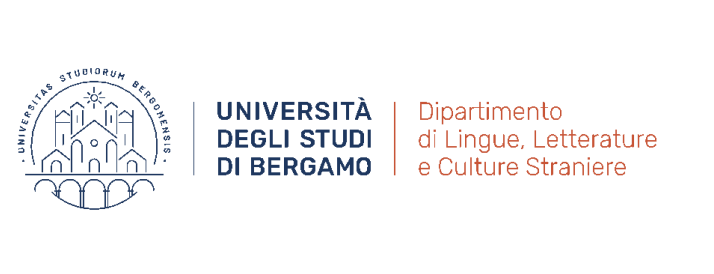
Call for Papers
International Conference
Imagining Resistance
Actions, Methods, and Technologies of Protest
University of Bergamo
Department of Foreign Languages, Literatures, and Cultures
12-13 March 2026
Organized by: Martina Misia, Stefano Mudu, Andrea Pitozzi, and Giuseppe Previtali within the activities of the CReN Research Group.
Since the nineteenth century, collective protest has been one of the most visible and transformative forms of political dissent. From workers’ strikes and anti-colonial struggles to feminist marches, student uprisings, and contemporary climate movements, the act of taking to the streets, or occupying other symbolic and material spaces, has profoundly shaped modern and contemporary political imagination. Protests not only register demands for justice, equality, or recognition; they also generate new expressions of collective action, generating original aesthetical repertoires, and mobilize technologies and devices that redefine how dissent is made visible, mediated, remembered, and historically narrated. In this sense, protest is as much a cultural and aesthetic phenomenon as it is a political one.
The heterogeneous quality of these various political phenomena urges us to nuance our understanding of uprisings, stressing continuities and differences between various forms of resistance. In this respect, this international conference aims to foster a broad reflection on the expressive practices of protest and the multiple forms of resistance they generate. Focusing on the various ways in which political agency is collectively thought, questioned, and performed today, Imaging Resistance will investigate protests as a laboratory of counter-power that is not necessarily linked to a revolutionary outcome, but a collective effort to imagine differently the aesthetic and political regime.
To imagine resistance is to explore how protest functions as a mode of political articulation and as a creative practice that challenges established orders. Specific attention will be devoted to the intersection between theory and practice: the conceptual frameworks that help us understand the specificity of protest, as well as the study of specific cases that reveal how dissent unfolds in particular historical, spatial, and technological configurations.
We therefore welcome contributions that interrogate protest from different perspectives. On a theoretical level, the conference invites reflections on the relation between protest and political philosophy, the distinctive traits of dissent as a political act, and the ways in which collective resistance reshapes the grammar of politics. We also encourage studies inquiring into the temporalities of protest, its sudden eruptions, its duration, its afterlives, and its spatial dimensions, from the occupation of squares and streets to digital networks and dispersed forms of action. By bringing these approaches together, the conference seeks to open a conversation on protest as a multifaceted phenomenon in which imagination and materiality, aesthetics and politics, converge.
Rather than considering protest or revolt merely as a represented theme, the conference aims to explore how practices of resistance shape and transform aesthetic languages, functioning not only as content but as a principle of formal and stylistic experimentation. More specifically, we invite contributions connected with (but not limited to) the following topics:
● Theories of protest and resistance: the role of political philosophy, critical theory, cultural studies and other disciplines in conceptualizing protests.
● The temporality and memory of protests: from sudden eruptions and cycles of mobilization to their afterlives, practices of documentation, preservation, and re-activation. Particular attention may be devoted to the “archives of dissent” and to cultural forms (literary, visual, or performative) that register how present struggles are continuously haunted and reshaped by past conflicts, such as in postcolonial contexts where histories of resistance are transmitted and reactivated across generations.
● Archaeologies/genealogies: in which ways old forms of protest (such as modern revolts or collective movements of the 20th century) predate contemporary phenomena and help us conceptualize what we nowadays recognize as a revolt?
● The relationship between protests and spatiality: squares, streets, institutions, frontiers, digital platforms, and the emergence of dispersed networks.
● Literature and protest: narrative strategies, poetic forms, and textual practices in which dissent becomes a principle of formal innovation, shaping genres, stylistic experiments, and, in Foucauldian terms, the emergence of alternative discourses and archives on/of resistance.
● Visualizing, verbalizing, and performing protests: the contribution of photography, cinema, visual arts and art history, sound and performance, textual and digital media to re-imagine and make protests visible. Case studies may include specific artworks, artists, or cultural texts.
● Global aesthetics of protests: the circulation of images, symbols, and repertoires across borders and the creation of a common language of gestures, also through comparative analysis of different kinds of protest.
Roundtable | Protest and Digital Technologies
As part of Imagining Resistance, a roundtable will explore the complex and evolving relationship between protest and digital technologies. From grassroots mobilizations to transnational solidarity networks, digital media have become crucial tools for amplifying activist voices and constructing alternative narratives that challenge dominant discourses. At the same time, they generate new dynamics of surveillance, commodification, and fragmentation. The roundtable will feature five to six speakers, each asked to present a brief theoretical input, followed by a collective discussion moderated by a chair. Those interested in this presentation format are kindly requested to indicate it clearly in their abstract. The selection of participants and final structure of the session will be at the discretion of the conference organizers and scientific committee.
Submission Guidelines:
Contributions may take the form of a traditional paper, but we encourage attendees to think beyond this format and towards other generative modes such as interviews/in-conversation-style talks, archival explorations, performances, readings, screenings, and collaborative workshop activities.
Please send an abstract (max. 300 words) and a short bio (max. 150 words) to martinaelisabetta.misia@unibg.it, stefano.mudu@unibg.it, andrea.pitozzi@unibg.it and giuseppe.previtali@unibg.it by December 14th, 2025. Selected speakers will be notified by January 9th, 2026.
Twenty minutes papers may be submitted and presented in either Italian or English.